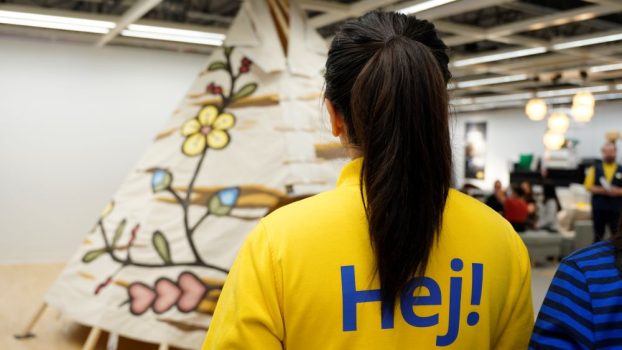
By Nicolette Addesa
In an era where AI is suggesting people smear glue on pizza and journalists find themselves engaging in emotionally charged banter with AI bots, the rapid pace of technological innovation can be as daunting as it is bewildering.
Amid this backdrop, I had the privilege to attend this week’s CPRS National Conference, a gathering dedicated to demystifying the impact of artificial intelligence on the public relations industry. The event was intended to help PR professionals navigate the trepidation that comes with being on the cusp of an AI revolution – a sentiment aptly encapsulated by the term “FOBO” or the “fear of becoming obsolete.”
The use of AI is revolutionizing organizational dynamics and stakeholder interactions, while also raising important ethical questions. Additionally, AI presents challenges such as the spread of disinformation and deepfakes, which can undermine trust and have negative impacts on reputation.
Emerging from the conference, I was imbued with a sense of optimism and a renewed excitement for the potential that AI holds for our field. Here are three key insights that I believe will be instrumental as we step confidently into the future of public relations:
Resistance is futile
The imperative to embrace AI within our profession cannot be overstated.
Historically, the field of PR has been reticent in adopting new technologies, as evidenced by the gradual acceptance of the internet, the slow integration of SEO and the cautious approach to social media. We cannot afford to let this pattern persist with AI – a transformative force that is already being used by journalists and PR professionals.
A recent “State of the Media” survey, conducted by Cision, reveals that while one in four journalists view AI as a significant challenge, nearly half are already harnessing its capabilities for tasks ranging from generating story ideas to aiding in research.
As we step into an era where the adage “there is an AI for that” becomes increasingly relevant, it is incumbent upon us to invest time in learning about the available tools and deliberate on how we can use them ethically. It is our responsibility to not only keep pace with AI but to leverage it in ways that enhance our profession and the value we provide.
PR’s irreplaceable human touch
Benjamin Prud’homme and Jerome Solis of Montreal-based AI research institute, MILA, explained that the concept of “Super Artificial Intelligence” – systems with self-awareness and cognitive capabilities surpassing those of humans – remains a distant reality. Despite significant advancements in the realm of generative AI, human involvement remains integral to the process.
Public relations is more than a set of tasks. That’s why AI won’t replace us. In my workshop at the CPRS conference, I discussed how our capacity for empathy, our skill in fostering trust, our flair for humour, and our proficiency in nurturing relationships are uniquely human attributes that AI, in its current state, cannot replicate. During his keynote address, Robert Doane highlighted the timeless art of storytelling as a fundamental means by which humans have connected and forged bonds throughout history. Storytelling, a foundational aspect of our profession, to use his words “is the humanness that we carry.” It epitomizes the quintessential human spirit that we embody.
Navigating the path of ethical progression
The integration of generative AI is projected to make a substantial economic impact, potentially contributing an additional $187 billion to Canada’s economy, according to a recent Microsoft Canada report, and enhancing labour productivity by 8%. This could translate to an average time saving of 30 minutes per workday for Canadians by the year 2030.
Concurrently, the environmental footprint of AI technologies like ChatGPT cannot be overlooked. A single interaction consisting of 20 to 50 exchanges with ChatGPT may consume the equivalent amount of water as a 500ml bottle, varying with the time and location of its deployment. The age-old debate of weighing environmental sustainability against economic benefits continues in the context of AI.
In closing
With the advent of automation, there is a shift towards dedicating greater time to the strategic and high-value elements of a communication professional’s role. This shift allows communicators to focus more on defining clear objectives, highlighting the value of their contributions, and establishing a direct link between their efforts and positive business results.
As routine tasks become automated, communicators are afforded the opportunity to return to the core principles of our profession – cultivating meaningful relationships, offering insightful internal guidance, and ensuring that communications are ingrained with a sense of humanity and sustained empathy.
Nicolette Addesa is a public relations specialist with EY Canada.
This article was written with the help of AI.























